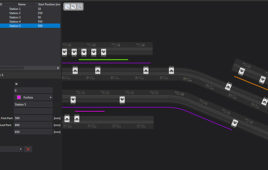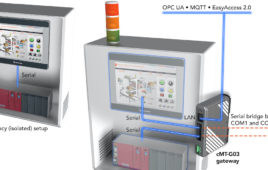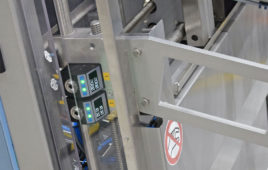The marriage of robotics and construction appears like an inevitability in the near future. Robotic construction methods and machines are primarily in the prototype/T&E (trial and error) stages, most of which are still years away from perfection. A research team at MIT has developed a robotic machine whose simple yet innovative design is a potential game changer in the looming collaboration between construction and robotics.
Known as a digital construction platform (DCP), the machine weighs over 8100 pounds, cost about $250,000 to create, consists of a base that moves on caterpillar treads at a top speed of 0.5 meters per second, and has a long hydraulic robotic limb to perform tasks. Still in its proof-of-concept stages, this prototype has a maximal printable volume of 2786 cubic meters and recently printed one of the biggest robot-built structures in under 14 hours—an open-topped igloo construct that stood over 12 feet tall with a 50-foot diameter. The DCP operates autonomously and runs on solar power. The robotic machine could be used to build homes and other structures in arid hostile environments like the desert, tundra, or interplanetary terrains on the Moon and Mars.
The designers of the autonomous machine determined there needed to be a variety of components for the concept design to truly work. Aside from moving independently, the machine needed its long robotic arm for lifting heavy objects, stretching across lengthy distances, and performing specific detailed jobs. One section of the machine’s limb performs all of the gross motions, while the smaller part is capable of more detailed intricate tasks. The DCP’s arm has a one-fingered hand capable of free movement, and is able to be fitted with a variety of tools like a foam insulation gun, welding attachment, and extruder that squirts melted plastic.
The DCP produces an expanding polyurethane foam that sets in 30 seconds, which is combined from two chemicals. One of the main aspects that distinguished the DCP is its ability to print structures using materials located at the building site and its surrounding environment. That means the machine could use resources like dirt, gravel, ice, and even hay. The DCP’s research team ultimately hopes the autonomous robot will reduce construction expenses and make work sites safer. Having said that, the DCP still has plenty of room for improvement, namely with the robot’s mobile and navigational capabilities. The DCP must gain a better understanding of its surroundings, and is likely to have proximity sensors installed to detect obstacles.
The MIT team that developed the DCP has already received inquiries from NASA, the US Military, and Google so it’s very possible we could see the finalized form of this autonomous robotic machine a lot sooner than we might have originally assumed.
Filed Under: 3D printing • additive • stereolithography, M2M (machine to machine)




